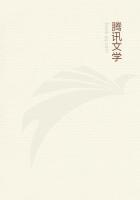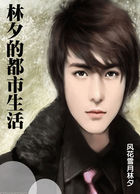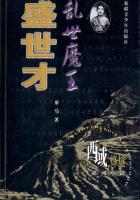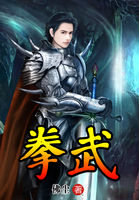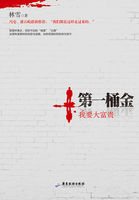Wise newspapermen stiffened to attention when the telegraph began ticking.The New York Herald, the Sun, and the Tribune had been founded only recently and they represented a new type of journalism, swift, fearless, and energetic.The proprietors of these newspapers saw that this new instrument was bound to affect all newspaperdom profoundly.How was the newspaper to cope with the situation and make use of the news that was coming in and would be coming in more and more over the wires?
For one thing, the newspapers needed better printing machinery.
The application of steam, or any mechanical power, to printing in America was only begun.It had been introduced by Robert Hoe in the very years when Morse was struggling to perfect the telegraph.Before that time newspapers were printed in the United States, on presses operated as Franklin's press had been operated, by hand.The New York Sun, the pioneer of cheap modern newspapers, was printed by hand in 1833, and four hundred impressions an hour was the highest speed of one press.There had been, it is true, some improvements over Franklin's printing press.The Columbian press of George Clymer of Philadelphia, invented in 1816, was a step forward.The Washington press, patented in 1829 by Samuel Rust of New York, was another step forward.Then had come Robert Hoe's double-cylinder, steamdriven printing press.But a swifter machine was wanted.And so in 1845Richard March Hoe, a son of Robert Hoe, invented the revolving or rotary press, on the principle of which larger and larger machines have been built--machines so complex and wonderful that they baffle description; which take in reels of white paper and turn out great newspapers complete, folded and counted, at the rate of a hundred thousand copies an hour.American printing machines are in use today the world over.The London Times is printed on American machines.
Hundreds of new inventions and improvements on old inventions followed hard on the growth of the newspaper, until it seemed that the last word had been spoken.The newspapers had the wonderful Hoe presses; they had cheap paper; they had excellent type, cast by machinery; they had a satisfactory process of multiplying forms of type by stereotyping; and at length came a new process of making pictures by photo-engraving, supplanting the old-fashioned process of engraving on wood.Meanwhile, however, in one important department of the work, the newspapers had made no advance whatever.The newspapers of New York in the year 1885, and later, set up their type by the same method that Benjamin Franklin used to set up the type for The Pennsylvania Gazette.The compositor stood or sat at his "case," with his "copy" before him, and picked the type up letter by letter until he had filled and correctly spaced a line.Then he would set another line, and so on, all with his hands.After the job was completed, the type had to be distributed again, letter by letter.Typesetting was slow and expensive.
This labor of typesetting was at last generally done away with by the invention of two intricate and ingenious machines.The linotype, the invention of Ottmar Mergenthaler of Baltimore, came first; then the monotype of Tolbert Lanston, a native of Ohio.
The linotype is the favorite composing machine for newspapers and is also widely used in typesetting for books, though the monotype is preferred by book printers.One or other of these machines has today replaced, for the most part, the old hand compositors in every large printing establishment in the United States.
While the machinery of the great newspapers was being developed, another instrument of communication, more humble but hardly less important in modern life, was coming into existence.The typewriter is today in every business office and is another of America's gifts to the commercial world.One might attempt to trace the typewriter back to the early seals, or to the name plates of the Middle Ages, or to the records of the British Patent Office, for 1714, which mention a machine for embossing.
But it would be difficult to establish the identity of these contrivances with the modern typewriter.
Two American devices, one of William Burt in 1829, for a "typographer," and another of Charles Thurber, of Worcester, Massachusetts, in 1843, may also be passed over.Alfred Ely Beach made a model for a typewriter as early as 1847, but neglected it for other things, and his next effort in printing machines was a device for embossing letters for the blind.His typewriter had many of the features of the modern typewriter, but lacked a satisfactory method of inking the types.This was furnished by S.
W.Francis of New York, whose machine, in 1857, bore a ribbon saturated with ink.None of these machines, however, was a commercial success.They were regarded merely as the toys of ingenious men.
The accredited father of the typewriter was a Wisconsin newspaperman, Christopher Latham Sholes, editor, politician, and anti-slavery agitator.A strike of his printers led him to unsuccessful attempts to invent a typesetting machine.He did succeed, however, in making, in collaboration with another printer, Samuel W.Soule, a numbering machine, and a friend, Carlos Glidden, to whom this ingenious contrivance was shown, suggested a machine to print letters.
The three friends decided to try.None had studied the efforts of previous experimenters, and they made many errors which might have been avoided.Gradually, however, the invention took form.
Patents were obtained in June, 1868, and again in July of the same year, but the machine was neither strong nor trustworthy.




